26 January 2024
To round off an exciting year of funding for skin research, the LEO Foundation’s last round of 2023 research grants – awarded through its open competition program – sees DKK 48 million to 14 skin research projects. Amongst stirring investigatory angles to be explored; how treatment options may be improved for leprosy, how rising “flesh-eating disease” may be countered, and examination of a healthcare model for the treatment of psoriasis based on patient health outcomes.
2023 has been an exciting year for the LEO Foundation’s research grants program. The competition attracted a record 148 applications which resulted in 37 grants and a total of DKK 123 million for skin research projects all over the world. This reflects a success rate of 25%.
In the final round of 2023 research grants, 14 skin researchers have been awarded a total of DKK 48 million for their projects, which all aim to further our knowledge of skin and skin diseases. The funded projects are highly diverse in their stimulating focuses, from the possibility of wound healing without scars to the treatment of psoriasis during pregnancy.
The latest round also saw a record-breaking number of 70 applications – almost half of the year’s intriguing array of reviewed skin research projects.
A glance into the year’s final round of projects
Accelerating to zero transmission of leprosy in Nepal
One project to receive a grant in the latest round is that by Principal Research Fellow Sarah Dunstan, who hails from the University of Melbourne in Australia. With a focus on two Nepali districts with a high incidence of leprosy, Sarah Dunstan will explore the leprosy-causing bacteria (Mycobacterium leprae).
Leprosy, despite being both treatable and preventable, remains a neglected tropical disease that causes severe stigmatization, disability, and mental health challenges. Achieving a leprosy-free world requires a deeper understanding of the disease’s pathophysiology, transmission, and the development of effective strategies for prevention and cure. That is what Sarah Dunstan aims to contribute to by collaborating with a network of community health workers in Nepal, who will actively search for leprosy cases.
The insights gained from this research will enhance interventions for diagnosis, treatment, and vaccine strategies and establish a solid framework to achieve the goal of zero transmission of leprosy.
Combating “flesh-eating disease”
Professor Thomas Sicheritz-Pontén from the University of Copenhagen in Denmark receives a grant for his project which will explore Necrotizing Soft Tissue Infections (NSTI), also known as “flesh-eating disease”.
Flesh-eating disease is rapidly escalating globally, its infections characterized by aggressive skin manifestations. Although prompt surgery and antibiotics serve as a first line of treatment for NSTI, infections often lead to necrosis and therefore amputation, and in worst cases death.
Flesh-eating disease is primarily caused by Group A Streptococcus (Strep A), and Thomas Sicheritz-Pontén aims therefore to decode Strep A’s genetic makeup, carrying out the fundamental work needed to develop a targeted therapy using bacteria-infecting viruses to kill the bacteria rather than antibiotics. His work will build off collaboration across different research hubs to provide vital insights to help combat NTSI.
Introducing value-based healthcare in psoriasis treatment
Professor Jo Lambert from Ghent University in Belgium is another researcher to receive a grant for her innovative project, which will trial the feasibility of using a value-based healthcare (VBHC) framework for psoriasis management and treatment.
The novelty of a VBHC framework lies in its optimization of value for patients, as it proposes a model in which providers, including hospitals and physicians, are paid based on patient health outcomes. Jo Lambert will conduct a clinical study in which new patients attending a dedicated psoriasis clinic (PsoPlus) of the Ghent University Hospital will be followed during at least a period of one year. Created value for psoriasis patients will be evaluated and findings distributed to provide a basis for more efficient psoriasis treatment placing patients in the foreground.
Read more about all 14 grantees and their projects below.
Adelheid Elbe-Bürger
Associate Professor, Medical University of Vienna, DKK 3.1m

Skin barrier immune defence against the multidrug-resistant fungal pathogen Candida auris
Adelheid Elbe-Bürger’s project investigates the pathogen:host interplay using ex-vivo skin models in relation to infections by Candida auris – a multidrug resistant fungus.
Drug-resistant microorganisms represent a serious human health threat worldwide. Candida auris (C. auris) is an emerging, multidrug-resistant human fungal pathogen. Its pronounced skin tropism (i.e., ability to infect) promotes persistent colonization of the skin and facilitates skin-skin transmission within health care facilities, leading to life-threatening infections of high mortality in immunocompromised patients.
The lack of clinically relevant primary human skin models with a disrupted barrier function has been a serious impediment to better understand the C. auris:host interplay during pathogenesis.
To counter this, Adelheid Elbe-Bürger and her team have developed unique, standardized human ex vivo skin models that allow them to study C. auris colonization and penetration as well as identify the immune cells that orchestrate both the recognition and immune defense against this fungus.
In Adelheid Elbe-Bürger’s project infected skin biopsies will be analyzed by single-cell RNA-sequencing, flow cytometry as well as confocal microscopy. Culture supernatants will be subjected to multiplex proteomics (i.e., a way to analyze many proteins simultaneously) to decipher host components governing fungal:host interactions.
The overarching aim is that the results will advance the understanding of tissue-specific mechanisms of anti-C. auris defense and may help to pave the way for improved therapeutic options.
Cory Simpson
Assistant Professor, University of Washington, USA, DKK 4.1m
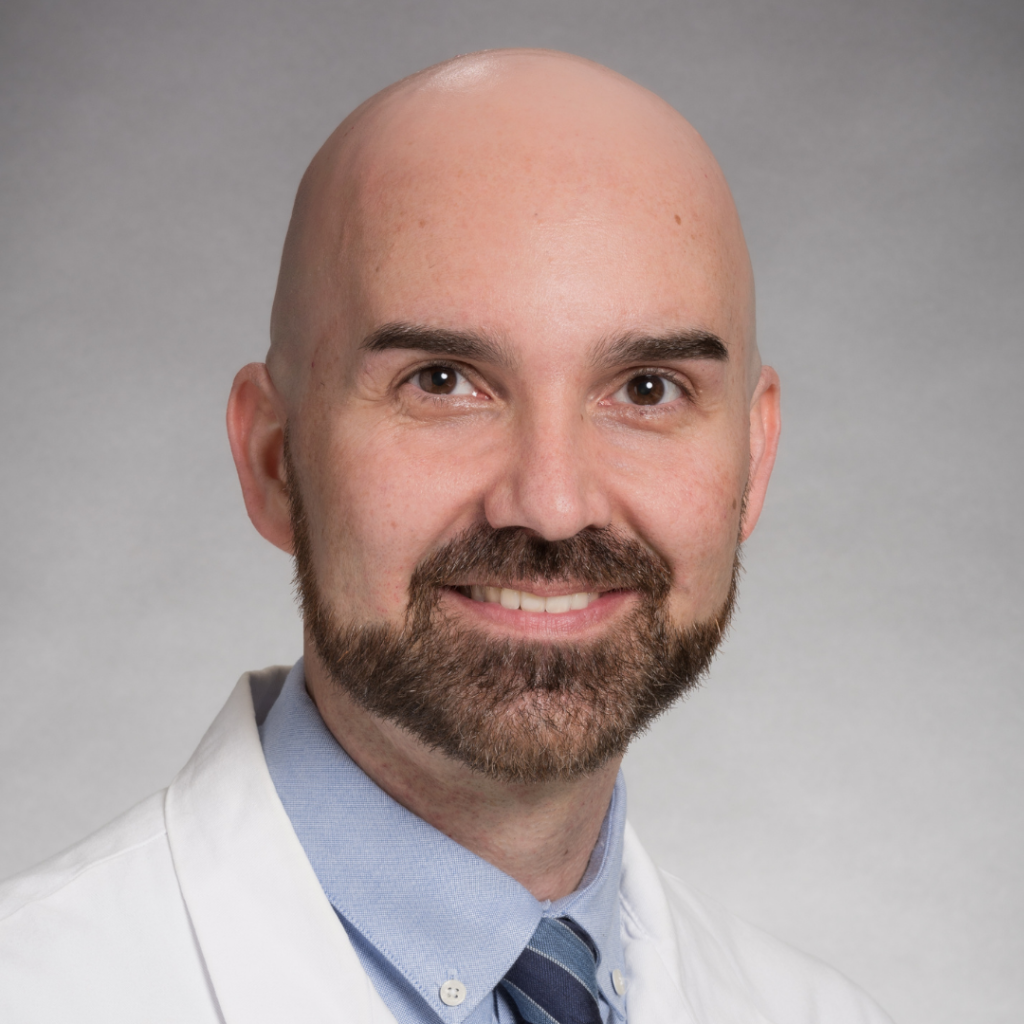
Modeling Hailey-Hailey disease to delineate its pathogenesis and identify therapeutic strategies
Cory Simpson’s project aims to investigate how mutations in the gene encoding the calcium pump SPCA1 cause the skin blistering disease Hailey-Hailey Disease (HHD) using human cellular and tissue models.
The epidermis forms the body’s outer armor from multiple layers of cells called keratinocytes, which assemble strong connections (desmosomes) to seal the skin tissue and prevent wounds. Several rare blistering disorders are linked to autoantibodies or gene mutations that disrupt desmosomes, causing keratinocyte splitting and skin breakdown. While autoimmune blistering diseases can be controlled by suppressing the immune system, treatments remain elusive for inherited blistering diseases.
One of these is Hailey-Hailey disease (HHD), which causes recurrent wounds, pain, and infections, leading to stigmatization of patients. Mutations in the ATP2C1 gene, which encodes the calcium pump SPCA1, were linked to HHD more than 20 years ago, yet the disease still lacks any approved therapies.
While it is known that SPCA1 resides in the Golgi apparatus (an organelle inside the cell responsible for protein processing and trafficking), our limited understanding of how SPCA1 deficiency compromises skin integrity has stalled drug development for HHD; moreover, mice engineered to lack SPCA1 did not replicate HHD.
Cory Simpson and his team at the University of Washington have built human cellular and tissue models of HHD to define what drives the disease and to discover new treatments. Their preliminary analysis of ATP2C1 mutant keratinocytes revealed impaired expression and trafficking of adhesive proteins, but also identified stress signals from mis-folded proteins and reactive oxygen species.
In this project, Cory Simpson and team will determine how these cellular dysfunctions compromise keratinocyte cohesion to cause skin blistering and test if cell stress pathways could serve as therapeutic targets for HHD.
Friedrich Götz
Professor, University of Tübingen, Germany, DKK 2.5m
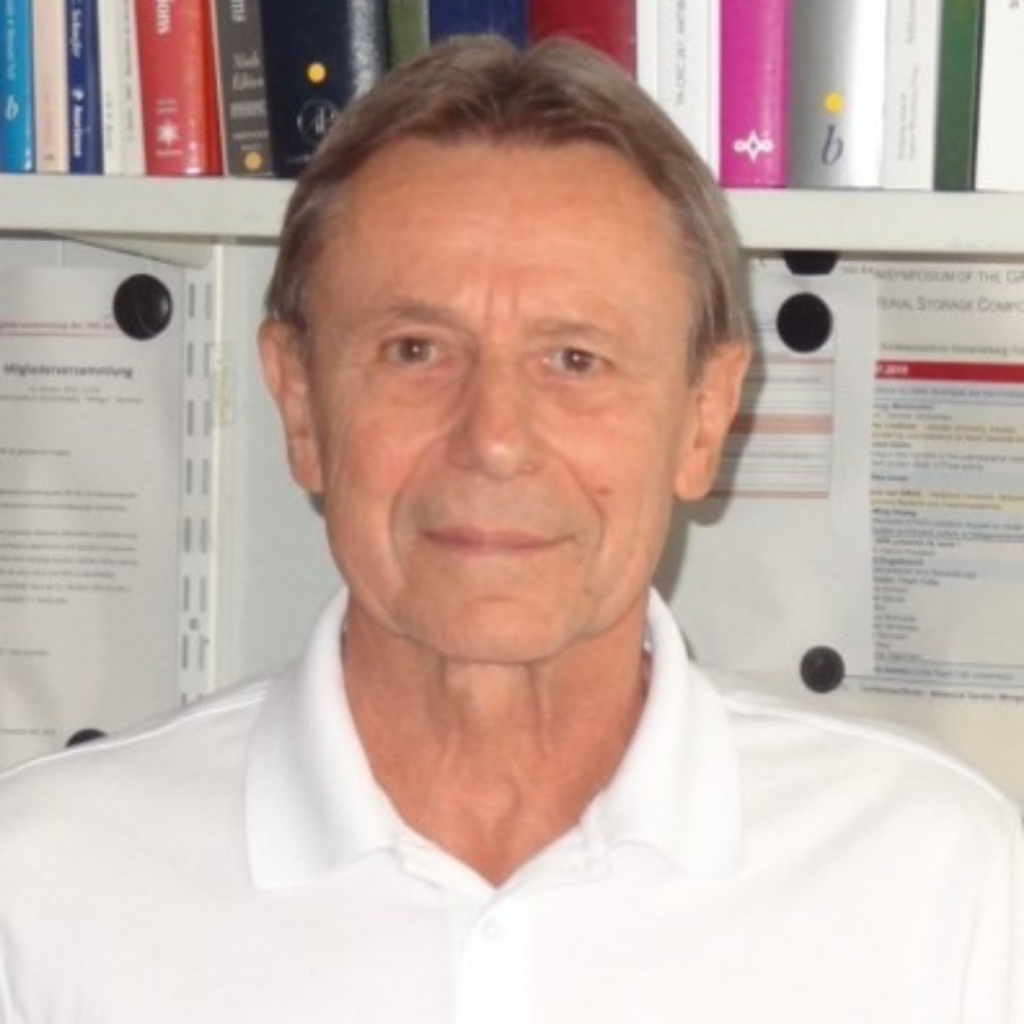
NEMFU: Impact of neuromicrobiota in diabetic foot ulcers
Friedrich Götz’s project aims to elucidate the role of bacteria-derived neurotransmitters in the development and progression of diabetic foot ulcers (DFU) and DFU-associated peripheral neuropathy (DPN).
A diabetic foot ulcer (DFU) is a poorly healing open wound that occurs in about 15% of patients with diabetes. Of those who develop DFU, 6% will be hospitalized due to infection or other ulcer-related complications. Previously, Friedrich Götz and his team have found evidence that neurotransmitter-producing bacteria of the skin (here termed neuromicrobiota) may have an impact on the healing process. However, it remains unknown whether the effects are beneficial or detrimental to wound healing.
In Friedrich Götz’s project it is hypothesized that permanent stimulation of neuronal skin receptors is more detrimental for wound healing. Through a close collaboration with the Trauma Surgery at the University Tübingen, BG Clinic Tübingen which treats ~200 DFU patients/year, samples will be analyzed for a variety of parameters, including neurotransmitter content, microbiome and metagenome composition, and impact of neurochemicals on wound healing. These will be compared to samples from healthy subjects taken at similar sites.
The goal of the project is to elucidate the role of bacteria-derived neurotransmitters in the development and progression of DFU and DFU-associated peripheral neuropathy (DPN). Friedrich Götz’s project will substantially aid the scientific understanding of DFUs and may provide potential for clinical application. If bacterial-derived neurotransmitters are found to have an impact on wound healing and progression of DFU, then this may open a new avenue for therapeutic approaches to treat DFU.
Jo Lambert
Professor, Ghent University, Belgium, DKK 2.6m
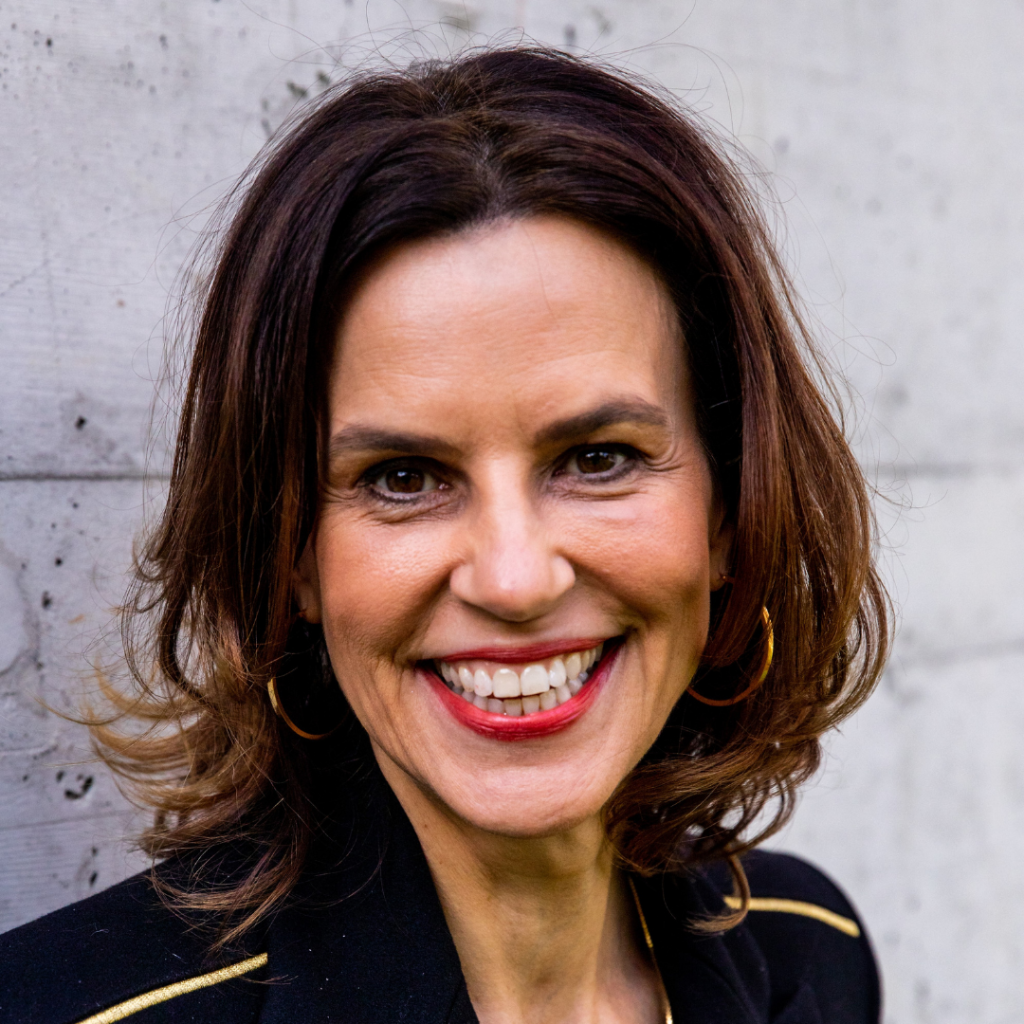
Value in psoriasis (IRIS) trial: implementing value-based healthcare in psoriasis management
Jo Lambert’s project will conduct a clinical investigator-initiated trial to examine the feasibility of using a value-based healthcare (VBHC) framework (i.e., a healthcare delivery model in which providers, including hospitals and physicians, are paid based on patient health outcomes), in relation to psoriasis management and treatment with an aim to optimize value for patients.
The healthcare sector is under tremendous financial pressure and the quality of care varies strongly. Many acknowledge that a shift towards a sustainable system is needed. For this reason, the conceptual framework known as value-based healthcare (VBHC) is further explored in this project in which psoriasis management is taken as a model to study VBHC implementation.
The objective of Jo Lambert’s project is to investigate the feasibility of using the VBHC framework for the management of psoriasis. This is done through a prospective clinical study in which new patients attending the dedicated psoriasis clinic (PsoPlus) of the Ghent University Hospital will be followed during at least a period of 1 year. The main outcome is to determine the created value for psoriasis patients.
The created value will be considered as a reflection of the evolution of the value score (i.e., the weighted outputs (outcomes) divided by weighted inputs (costs)) obtained using data envelopment analysis (a non-parametric method to compare productive efficiency). Secondary outcomes are related to comorbidity control, outcome evolution, treatment costs and defining a bundled payment scheme.
Once completed, the findings of Jo Lambert’s project will be disseminated by various means: (1) publication in one or more peer- reviewed dermatology and/or management journals, (2) (inter)national congresses, (3) via the psoriasis patient community and (4) through the research team’s social media channels.
The results obtained may provide a basis for more efficient psoriasis treatment with improved patient value.
Johannes Griss
MD PhD, Medical University of Vienna, Austria, DKK 4m
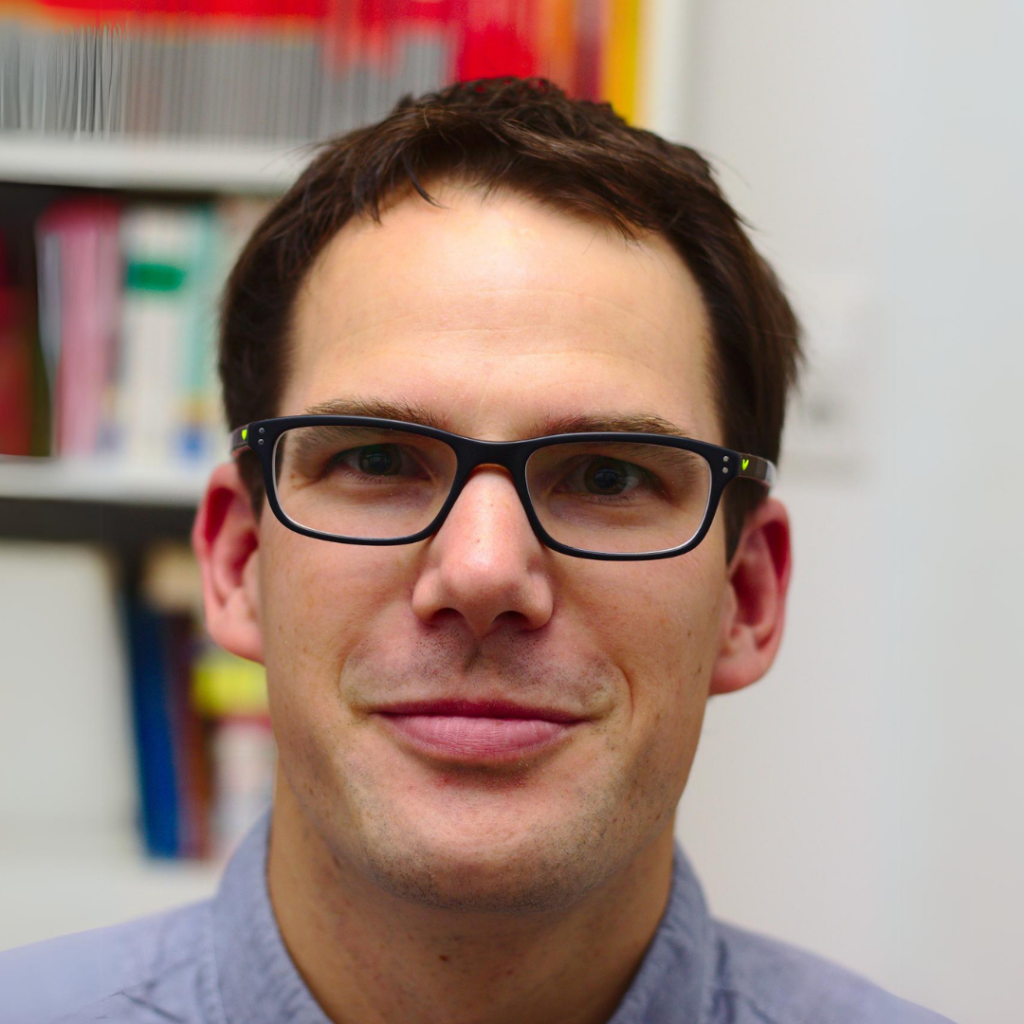
Unravelling the Link Between Past Infections, the Microbiome, and Therapy Resistant Psoriasis
Johannes Griss’ project aims to elucidate the immunological memory of biologics-resistant psoriasis patients using advanced screening methodology. This, coupled with identifying immune composition in lesions, may reveal new treatment options.
Efficient treatment of cutaneous psoriasis is an example of the great success of modern biologicals. Nevertheless, a subset of patients remain that do not respond to most biologic treatments. This group remains in high need of efficient treatment options. It has been speculated that therapy-resistant psoriasis is caused by either specific compositions of the microbiome or unique previous viral infections.
Viral infections can trigger autoimmune diseases and dysregulated immune responses against the microbiome may trigger inflammatory and autoimmune diseases. However, to date it has not been possible to cover the vast space of antigens represented by the microbiome. Johannes Griss and his team recently showed that phage display libraries (PhIP-Seq, a high-troughput screening method utilizing bacteria-infecting viruses) can be used to identify and characterize antibodies against several 100,000s of antigens simultaneously instead of several 100s with conventional methods. This method can reveal both previous viral infections as well as the composition of the microbiome at large scale and low cost.
In this project, the team will use their novel PhIP-seq approach to characterize the immunologic state of a large in-house cohort of psoriasis patients. They will pair this with an in-depth characterization of the lesional immune composition. In this way, they aim to be able to test whether a patient’s immune memory alters psoriatic inflammation and influences therapy response.
If successful, their findings may reveal novel treatment approaches and biomarkers to allow optimal matching of biologic treatments.
Laura Mackay
Professor, University of Melbourne, Australia, DKK 3.8m
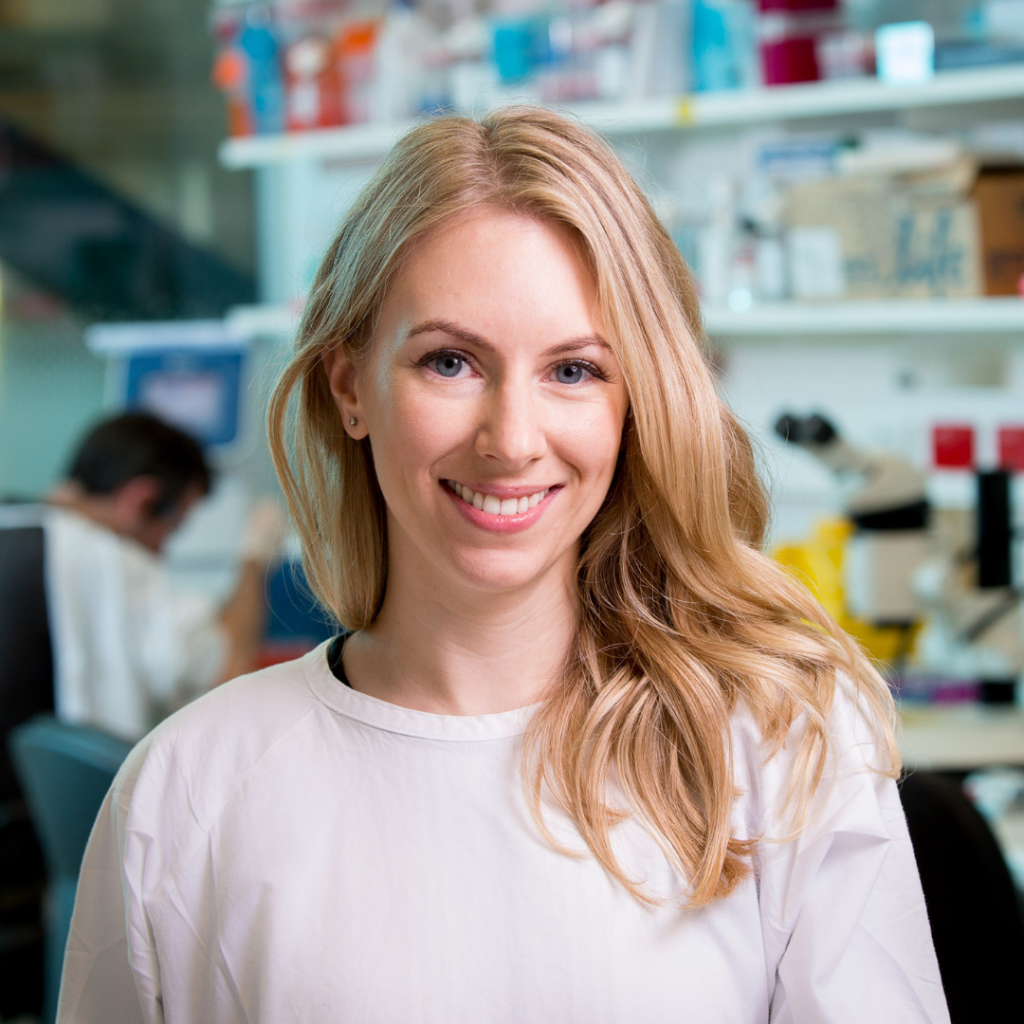
Unravelling the diversity and function of skin-resident T cells
Laura Mackay’s project investigates how tissue-resident T cell (TRM) populations in skin vary in development and function across body surfaces exposed to different environmental factors.
The generation of optimal immunotherapies requires effective T cell responses. Whilst some T cells patrol the blood, a unique subset called tissue-resident memory T (TRM) cells permanently exist within the tissues of the body. T cells that reside in the skin comprise distinct populations that differentially contribute to protecting the skin against disease.
The previous work of Laura Mackay and her team has demonstrated that different populations of skin-resident T cells in mice rely on separate molecular processes to function effectively. However, understanding of how human skin-resident T cells develop and control infectious insults and inflammatory disorders remains limited.
This project aims to determine skin TRM cell variation across the body, encompassing skin sites exposed to different environmental factors, such as sun exposure and hair follicle density, as well as in the context of disease. The team will seek to define the molecules that enhance skin-resident T cell function and survival, thus identifying factors that may prevent disease in healthy skin.
Overall, the aim is to generate fundamental new knowledge about the regulation of skin immunity and homeostasis. This knowledge is critical for the development of treatments and immunotherapies to harness T cell immunity for skin disorders.
Mariana Oliveira
PhD, CICECO, Universidade de Averio, DKK 3.1m
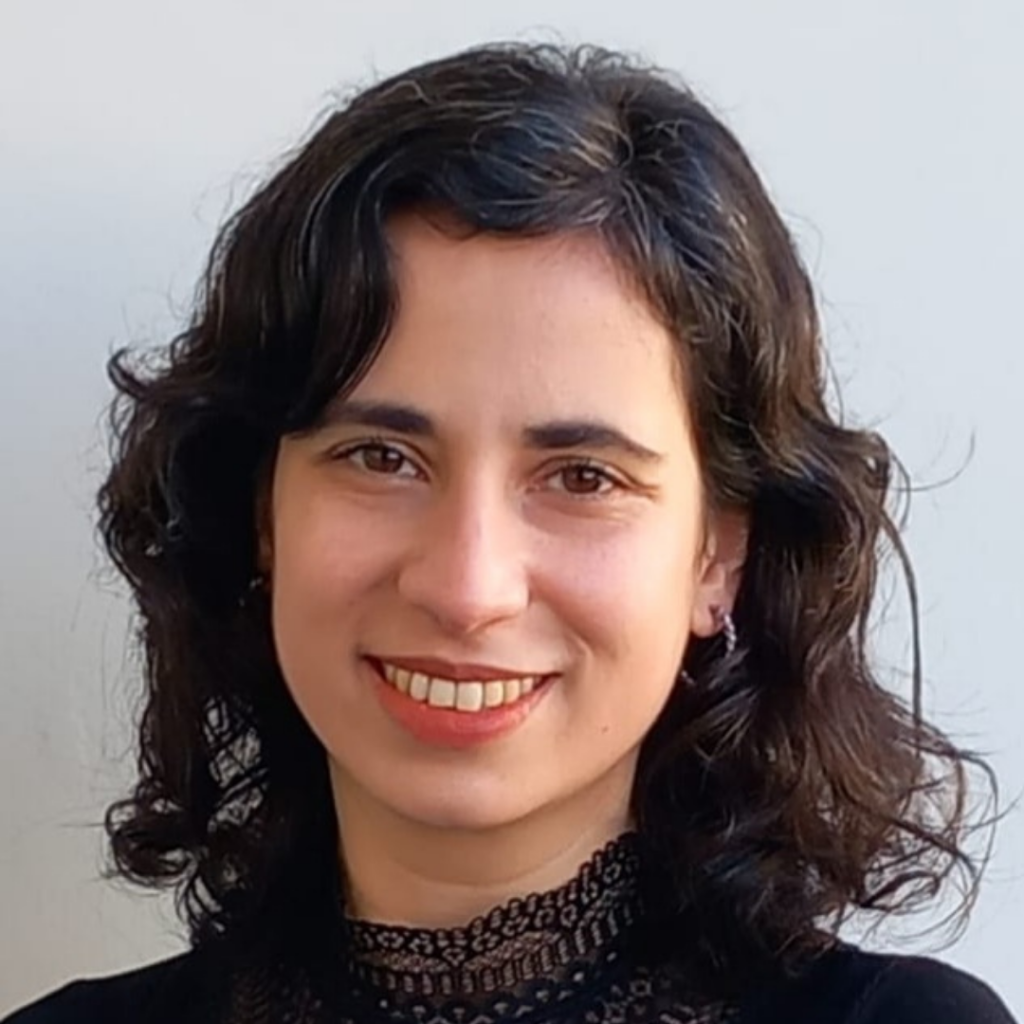
LAZARUS – Exploring devitalized MSCs fibres as immunomodulatory devices for wound regeneration through (i) direct promotion of healing or (ii) enabling of allograft transplantation free of systemic immunosuppression
Mariana Oliveira’s project investigates the potential of using de-vitalized mesenchymal stromal cells (MSCs) as direct or indirect immunomodulatory or regenerative biomaterials for treatment of difficult-to-treat or chronic wounds.
The project aims at exploring MSCs as constituents of off-the-shelf easy-to-handle immunomodulatory biomaterials. The project focuses on using these materials to treat difficult-to-heal wounds, which may be chronic, or have proneness to become chronic if not properly treated.
Two treatment approaches will be explored using devitalized MSC aggregates through (i) their direct use as immunomodulatory and regenerative biomaterials capable of inducing healthy tissue deposition, or (ii) by their ability to promote localized immunosuppression. The latter approach targets skin allogeneic (i.e., non-self) engraftments in order to avoid or minimize systemic immunosuppressants intake, associated with proneness to infections, higher allograft rejection rate, and severe comorbidities.
The fact that no living cells are administered is expected to improve the predictability and safety of the devices when compared to other cell-based therapies.
The technology also eliminates risks related to possible cell migration to unwanted sites, or the occurrence of phenotypic changes after implantation (e.g., loss of regenerative features or differentiation into unwanted cell phenotypes, which may be particularly relevant for highly plastic cells like MSCs).
The hope is to develop efficient treatments for wound healing with minimal risk of side effects.
Peggy Myung
Associate Professor, Yale University, USA, DKK 2.1m
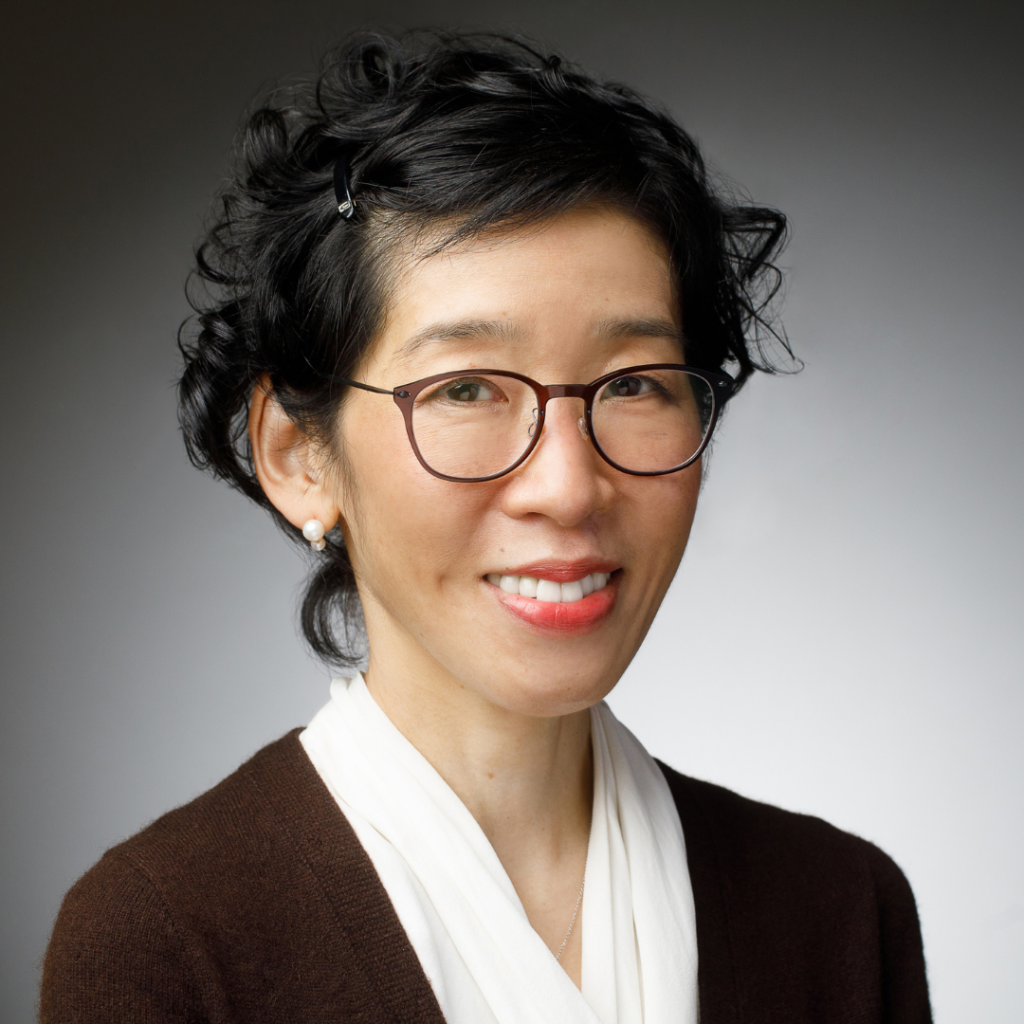
Programming dermal fibroblasts to stimulate hair follicle regeneration
Peggy Myung’s project aims to elucidate how two key molecular signals regulate the development of dermal condensate cells, a group of cells pivotal for hair formation.
The hair follicle dermal condensate (DC) is a cluster of quiescent dermal cells that can induce new hair follicle formation and holds the potential to revolutionize hair loss treatments. However, a key barrier to exploiting DCs to make new hair is that the molecular and cellular mechanisms that lead to DC formation are poorly understood.
Peggy Myung and her team recently identified two morphogen signals that are necessary and sufficient to drive DC formation. These two signals cooperate to unfold an initial stage of progenitor proliferation followed by a stage of cell cycle exit and DC maturation. Importantly, these stages of differentiation depend on levels of these two signals: Low levels induce progenitor proliferation; higher levels induce quiescence and DC maturation.
They hypothesize that different signaling levels regulate these stages of differentiation by inducing distinct signature genes that cause either DC progenitor expansion or terminal differentiation. They recently established a high-throughput dermal culture system to test this hypothesis. Using this novel platform and in vivo hair reconstitution assays, they aim to define how modulation of levels of these two signals regulates dermal gene expression profiles, cell cycle dynamics and DC function.
If successful, Peggy Myung’s project may define tunable molecular targets to develop novel treatments for hair loss and to make DC organoids for drug testing.
Renate van der Molen
Assistant Professor, Radboud University Medical Center, Netherlands, DKK 2.6m
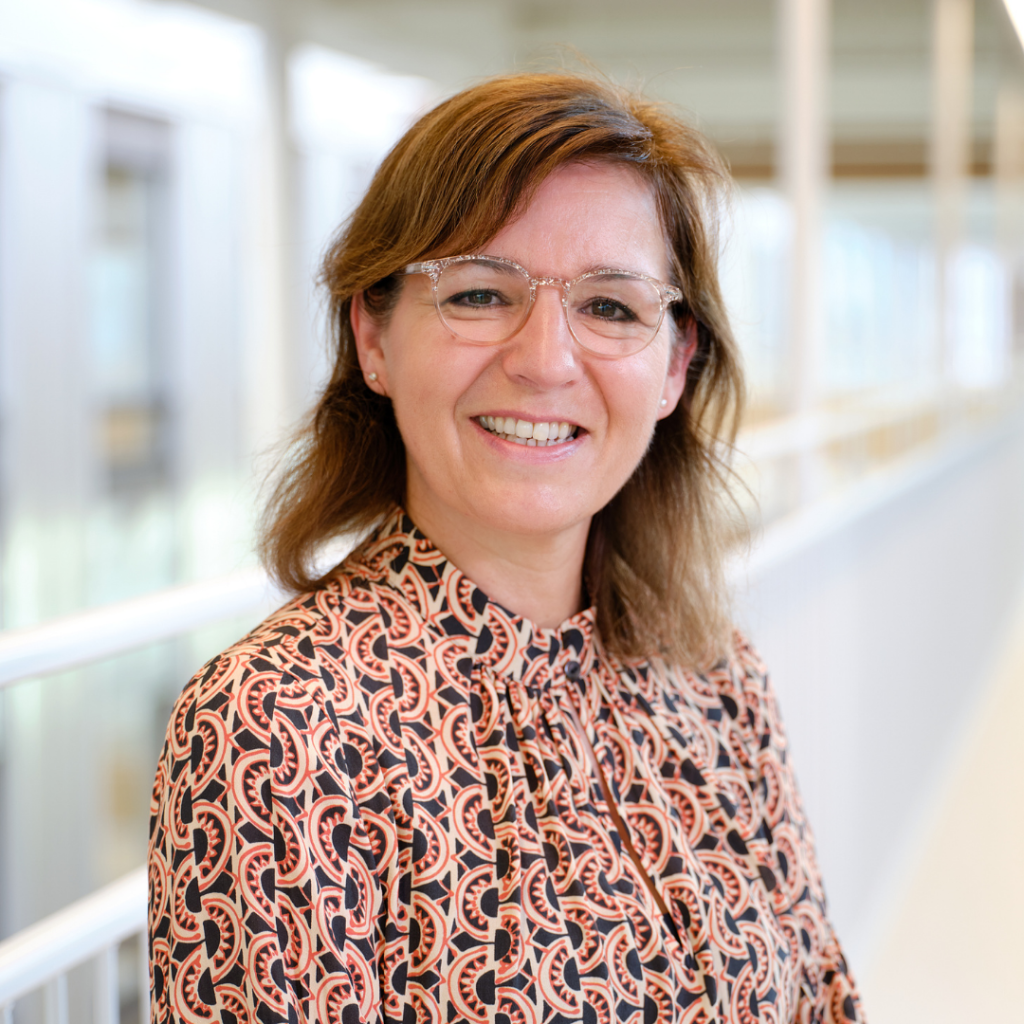
Treatment of psoriasis during pregnancy, an immunological puzzle and a delicate balance
Renate van der Molen’s project will study the effect of psoriasis and the associated treatment with biologics on the pre-pregnancy uterine immune environment and also investigate the effect on trophoblast invasion using a co-culture cellular model.
Pregnancy in patients with immune-mediated diseases like psoriasis is challenging and requires a tightly regulated immune system. The mother’s immune system must prevent rejection of the fetus that partly represents paternal characteristics and thus foreign to the mother’s immune system, while still being alert to infections threatening herself and the baby. Additionally, the immune system is important for invasion of fetal cells (trophoblast cells), into the cell lining of the womb to form a healthy placenta. Thus, a dysregulated immune system, i.e., during flares of psoriasis, can negatively affect pregnancy.
Furthermore, knowledge of the effect of biologics to treat psoriasis, anti-TNFα, anti-interleukin-17 (IL17) and anti-IL23, on pregnancy is sparse. This complicates decision making on treatment of women with psoriasis before and during pregnancy.
In this project, Renate van der Molen and her team will therefore study the effect of psoriasis and the treatment with biologics on the local uterine immune environment. In addition, using an innovative in vitro co-culture model of trophoblasts and immune cells they will study the effect of psoriasis and the treatment with anti-TNFα, anti-IL17 or anti-IL23 on trophoblast invasion.
Renate van der Molen’s project will give insights to whether and how psoriasis and the treatment with biologics can affect a future pregnancy, which is a step towards better evidence based clinical decisions on the best treatment for women with psoriasis with a child wish.
Sarah Dunstan
Principal Research Fellow, University of Melbourne, Australia, DKK 4m
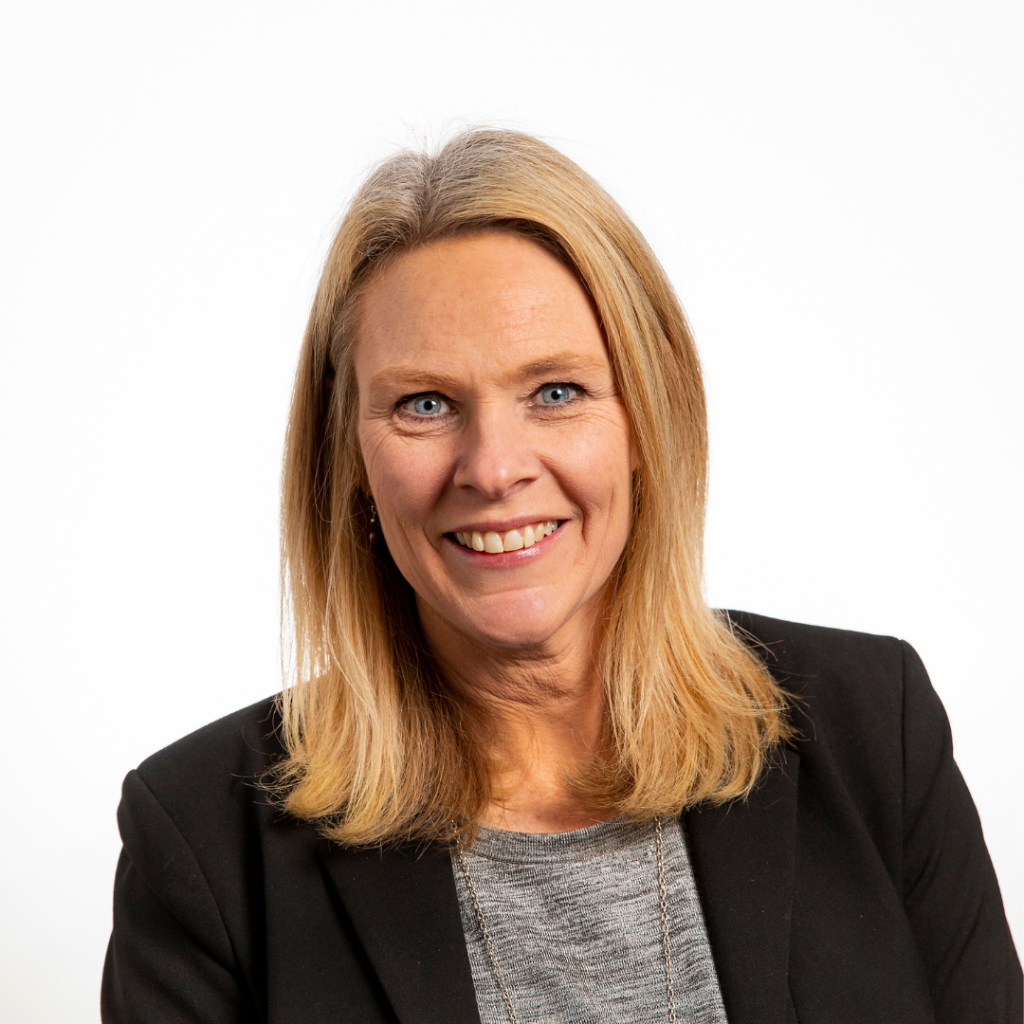
Accelerating to Zero Transmission of Leprosy in Nepal (ACCELERATE)
Sarah Dunstan’s project aims to whole-genome sequence the leprosy-causing bacteria (Mycobacterium leprae) found in specific areas of Nepal to understand disease epidemiology, transmission dynamics and persistence to improve treatment strategies.
Leprosy, a neglected tropical disease of the skin, causes severe stigmatization, long term disability and mental health issues. It is treatable and preventable yet persists among the world’s poorest and most neglected citizens. To realize the goal of a leprosy-free world we need to deepen the knowledge of the disease pathophysiology and how it spreads, and ensure effective strategies to diagnose, prevent, and cure the disease and its long-term effects. Major gaps exist in the understanding of leprosy transmission which limit the efficiency of interventions to prevent infections and achieve zero transmission.
Sarah Dunstan’s project will use whole genome sequencing of the causative agent, Mycobacterium leprae, to unravel the complexities of leprosy epidemiology and persistence. The knowledge gained will also improve interventions for diagnosis, treatment, and vaccine strategies, and develop a robust framework for obtaining the zero-transmission goal in Nepal. A network of community health workers will conduct active case finding for leprosy in the community in two districts of Nepal with a high incidence of leprosy and high multidimensional poverty index (i.e., poverty in relation to health, education and living standards). Genomic epidemiology will be used to characterize subtypes of the M. leprae identified, matched to individual patients, disease transmission dynamics and drug resistance emergence. Mathematical models will inform optimized active case finding, and this will form the basis of stakeholder engagement to develop evidence-informed policy revisions in the national strategic plan for leprosy.
Simon Bekker-Jensen
Professor, University of Copenhagen, Center for Healthy Aging, Denmark, DKK 3.8m

The ribotoxic stress response in inflammatory skin disease
Simon Bekker-Jensen’s project investigates the potential role of the NLRP1 (Nucleotide-Binding Oligomerization Domain, Leucine Rich Repeat and Pyrin Domain Containing 1) inflammasome in combination with the upstream activator Ribotoxic Stress Response (RSR) in AD and psoriasis.
Inflammatory and hyperproliferative skin diseases, including atopic dermatitis (AD) and psoriasis, are associated with cascades of inflammatory events. A key player in innate skin immunity is the NLRP1 inflammasome, which mediates inflammation and cell death in response to a wide array of stress insults. In human keratinocytes, NLRP1 was recently shown by Simon Bekker-Jensen’s team and others to be activated by the Ribotoxic Stress Response (RSR) upon exposure to UV-B irradiation and a range of bacterial toxins.
Based on their preliminary data demonstrating that the RSR also mediates inflammation and keratinocyte hyperproliferation in vivo, the team hypothesize that these pathways have broader implications for the pathogenesis of inflammatory skin diseases.
In Simon Bekker-Jensen’s project, the validity of the RSR as a therapeutic target in the common inflammatory skin diseases psoriasis and AD will be explored. By genetic deletion and pharmacological inhibition of the RSR, the team will interrogate this pathway in several mouse models of inflammatory skin diseases. In addition, they will generate a humanized NLRP1 mouse model to study the RSR-NLRP1 signaling axis in vivo. Finally, by using 3D organotypic skin models and skin biopsies from patients, they aim to firmly establish the role of the RSR in psoriasis and AD.
The long-term goal is to leverage this insight to develop new therapeutic options for the management and treatment of inflammatory skin diseases.
Sofia Ferreira Gonzalez
Fellow, University of Edinburgh, UK, DKK 4m

Scarless wound healing: exploiting the regenerative properties of the spiny mouse
Sofia Ferreira Gonzalez’s project aims to characterize the regenerative capacity of the spiny mouse – the only mammal known to fully regenerate skin with minimal scarring – to optimize future wound treatment in humans.
Skin fibrosis is often a sequela of suboptimal wound healing following significant epidermal and/or dermal injury (burns, trauma, major surgeries). Fibrotic material replaces native skin with dense, non-functional connective tissue, ultimately leading to loss of function. In its mildest form, fibrosis is a minor aesthetic problem, but in the most severe cases it can lead to debilitating skin pathologies that result in limited movement, high morbidity, and prevention of patient reintegration into society.
Current treatments for fibrosis include physical therapy and surgery, but there are no therapies that directly target the underlying cellular and molecular mechanisms of skin fibrosis.
The spiny mouse (Acomys) is, to date, the only mammal capable of skin autotomy (i.e., self-amputation of the skin to elude a predator’s grasp). Fascinatingly, the spiny mouse completely regenerates the lost skin and regrows cartilage and appendages (nails, hair) with minimal fibrotic response.
A multimodal approach addressing the mechanisms driving spiny’s scarless regeneration may provide novel therapeutic opportunities to treat and prevent skin fibrosis.
In this project, Sofia Ferreira Gonzalez and her team investigate three questions: 1) is the spiny mouse’s scarless regeneration depending on specific cell populations, circulatory factors or a combination thereof, 2) which specific pathways are responsible for the scarless regeneration, and 3) how can the research findings be translated into novel therapeutics to improve skin wound healing in humans?
Thomas Sicheritz-Pontén
Professor, University of Copenhagen, Denmark, DKK 4m
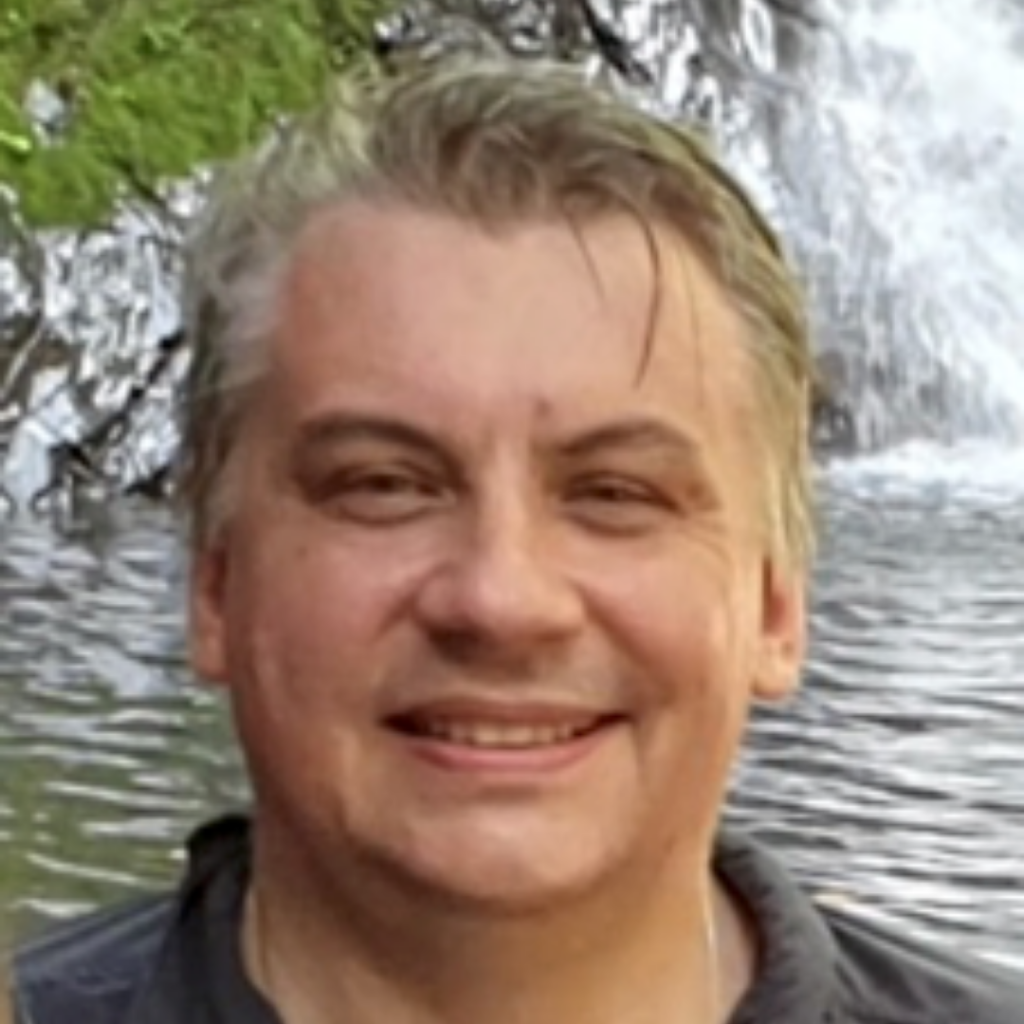
Phage therapy to treat group A Streptococcus in Necrotizing Soft Tissue Infection
The project led by Thomas Sicheritz-Pontén from the Globe Institute at the University of Copenhagen, aims to carry out the fundamental work needed to develop targeted phage therapy (using bacteria-infecting viruses) to counter Necrotizing Soft Tissue Infections (NSTI). This innovative treatment approach necessitates an in-depth understanding of the causative organisms, which will be achieved through sequencing these organisms and employing machine learning algorithms to predict their susceptibility to specific phages.
Necrotizing Soft Tissue Infections (NSTI), also known as “flesh-eating disease”, are rapidly escalating globally, posing a deadly bacterial threat that necessitates innovative therapeutic strategies due to its profound impact on human health. NSTI is characterized by aggressive skin manifestations primarily caused by Group A Streptococcus (Strep A). Although prompt surgery and antibiotics serve as the first-line treatment, infections often progress to necrosis, rendering antibiotics ineffective and often necessitating amputation and in worst case death.
Bacteriophages, or simply phages, offer a promising avenue to address this severe skin and soft tissue infection. Phages are viruses that selectively infect and eliminate bacteria, including antibiotic-resistant strains, without harming human cells.
Thomas Sicheritz-Pontén and team will do the fundamental work needed to identify prototype tailored phage therapies targeting Strep A. Along with his team, comprised of chief physicians from three different Danish hospitals, the UK Centre for Phage Research and the University of Copenhagen, Thomas Sicheritz-Pontén intends to identify phages capable of rapidly eradicating the bacteria, harness bacterial enzymes (endolysins), and employ phage satellites (mobile genetic elements that parasitize phages) for gene delivery.
By collaborating across research hubs, the team will decode Strep A’s genetic makeup, thereby facilitating the creation of precise phage cocktails and develop a novel molecular typing system to predict bacterial susceptibility, streamlining targeted phage treatments.
If successful, Thomas Sicheritz-Pontén’s project may greatly aid the battle against deadly NSTI infections through innovative development of phage therapy.
Valentina Greco
Professor, Yale University, USA, DKK 3.8m
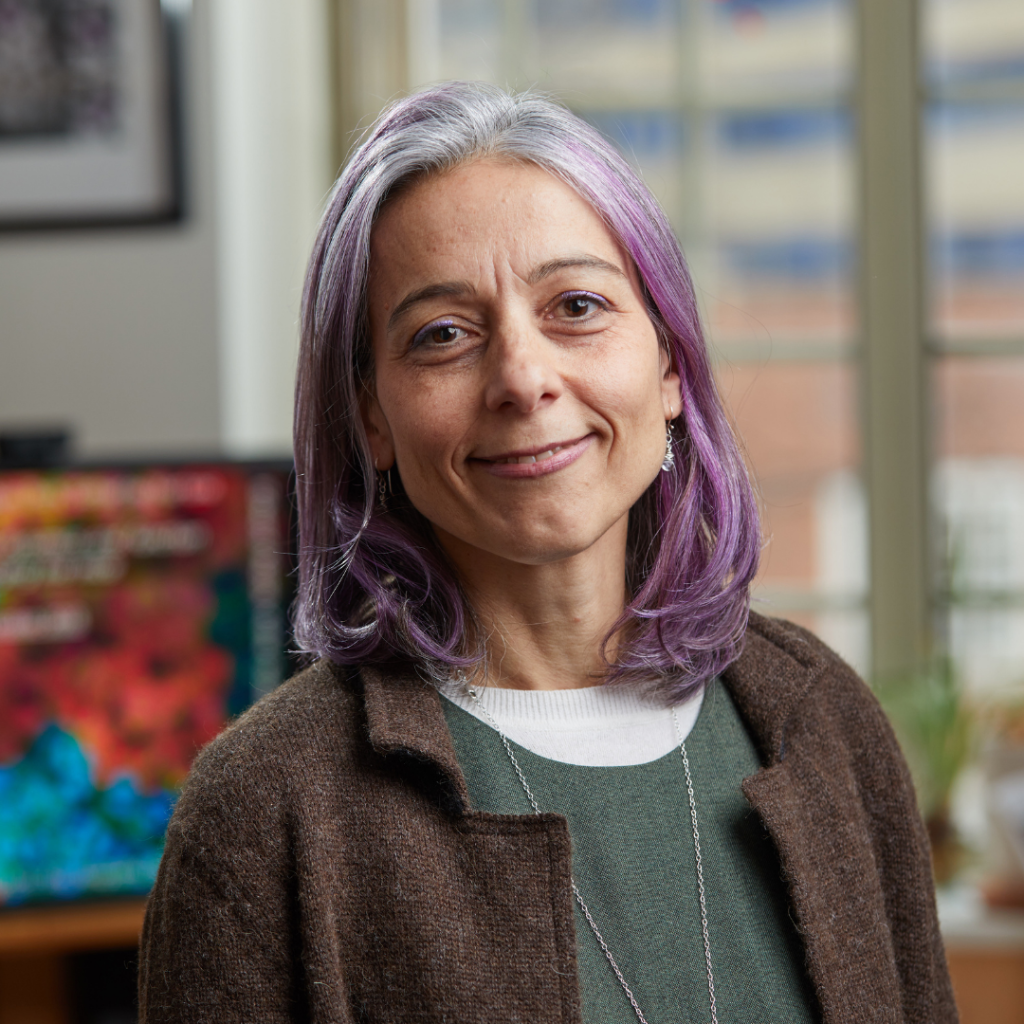
Investigate the onset of pathological remodeling events in SSc and assess their contribution to disease pathogenesis
Valentina Greco’s project investigates the potential role of fibroblast and blood vessel maturation processes in systemic sclerosis (SSc) by monitoring development longitudinally in-vivo.
The skin protects organisms from their environment; it prevents water loss and infection and blocks physical insults. This barrier includes an outer layer and an inner, highly organized scaffold of fibers and blood vessels. Proper development of these two networks following birth is essential for health during adulthood; however, these processes are poorly understood.
Defects in the assembly and function of dermal fiber and blood vessel networks lead to severe diseases such as Systemic Sclerosis (SSc) or scleroderma. Identification of early SSc stages is crucial for the development of diagnostic, preventive, and therapeutic strategies. However, gaining this knowledge has been challenged by the inability to track these events longitudinally and in vivo.
Valentina Greco’s lab has overcome this roadblock and developed the ability for continuous visualization of skin networks, specifically how fibroblast and blood vessel networks develop after birth under healthy conditions. In this project – and building on this knowledge – they will utilize mouse models that mimic SSc in humans to investigate whether mechanisms crucial for postnatal skin maturation participate in this disease.
Valentina Greco’s project, if successful, will advance the understanding of the skin’s structural and blood vessel networks, shed light on their role in health and disease, and provide a solid foundation to improve clinical management of those suffering from often-lethal ailments such as scleroderma.
Application and evaluation process
The LEO Foundation has established a formal evaluation process with a panel of national and international external experts from the skin research community to assist the Board in ensuring that grants are given to the best projects and the most qualified applicants.
All applications are evaluated by the LEO Foundation’s independent Scientific Evaluation Committee. Based on the evaluations by the Scientific Evaluation Committee, the final decisions on grants are made by the Board.
Next application round in 2024
The LEO Foundation calls for applications for research projects focusing on the skin and its diseases on an ongoing basis. The next call opens 19 February 2024 and closes on 2 April 2024.
The competition is open to talented skin researchers at PhD level or above from any country. The typical grant amount applied for is DKK 2–4 million for a period of 1–3 years. Researchers who would like to apply for a LEO Foundation research grant will be able to apply here.
Get an overview of current funding opportunities from the LEO Foundation here.